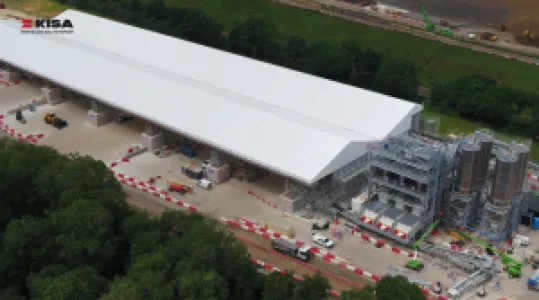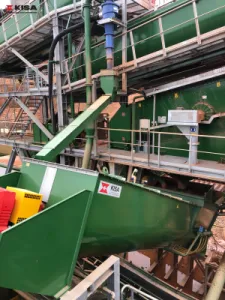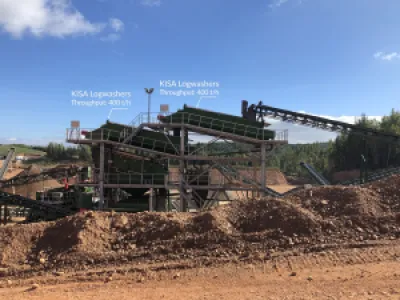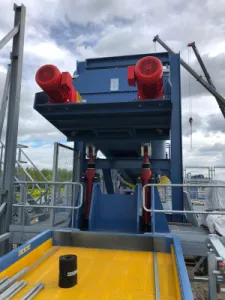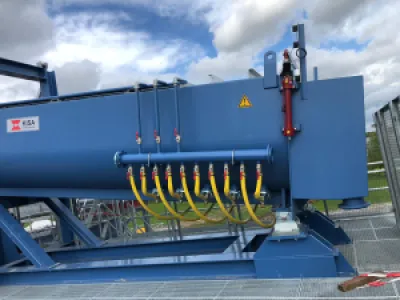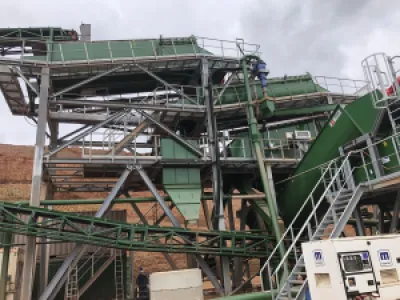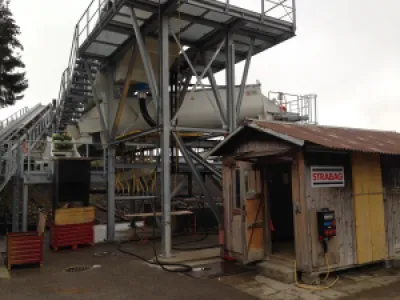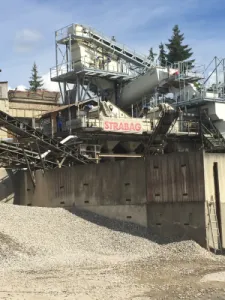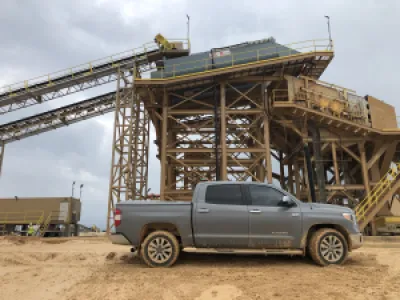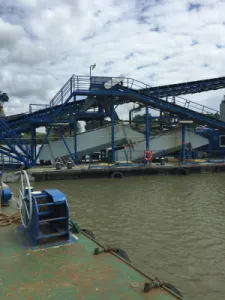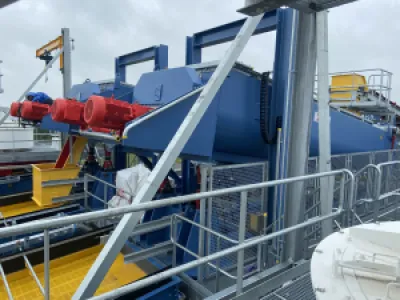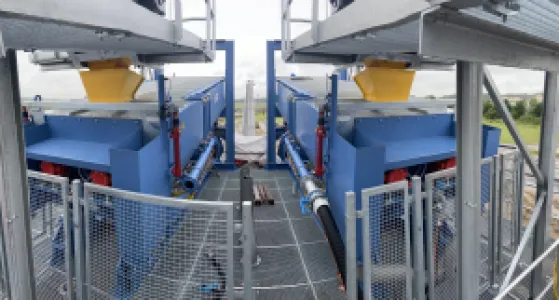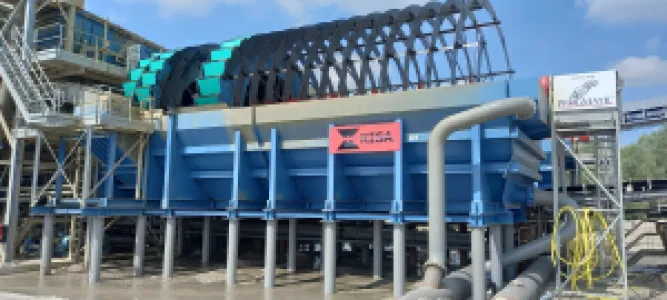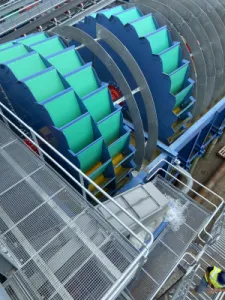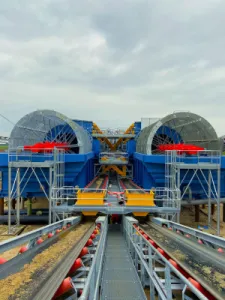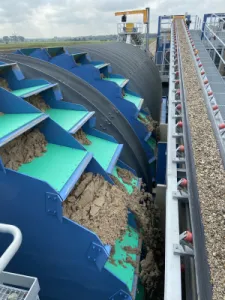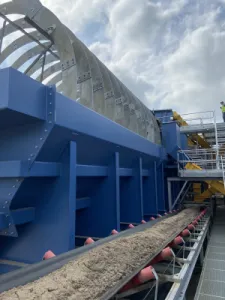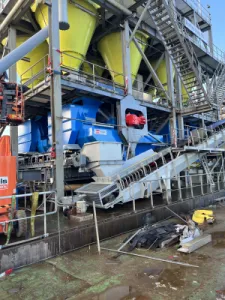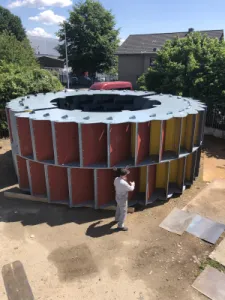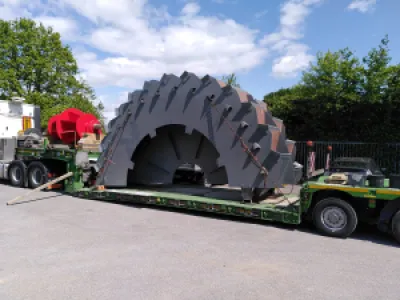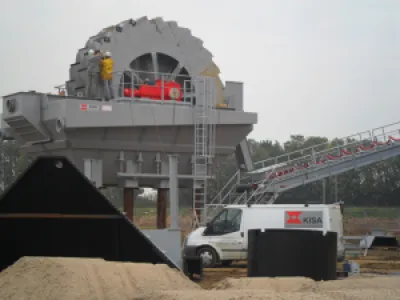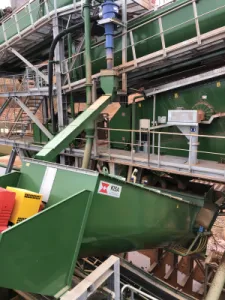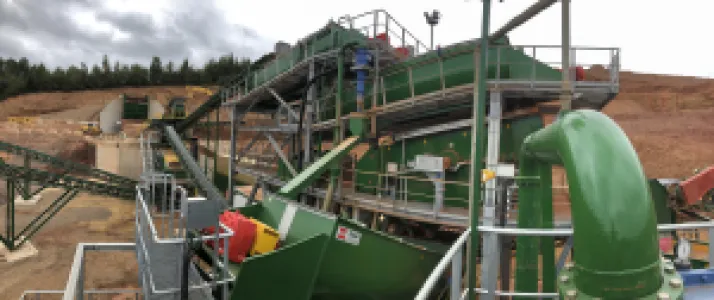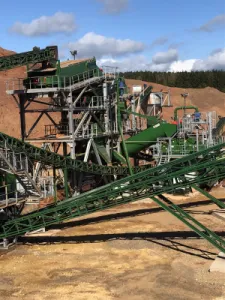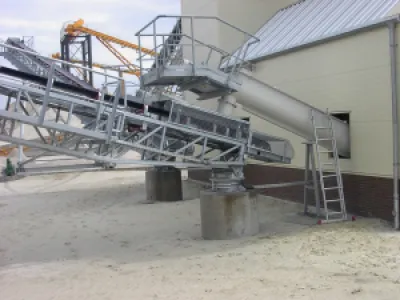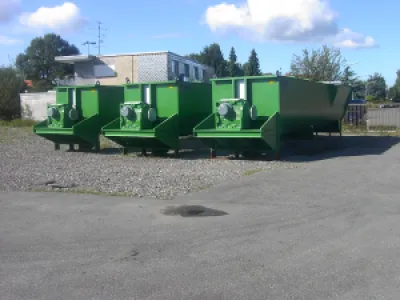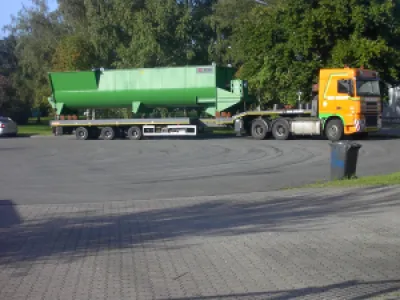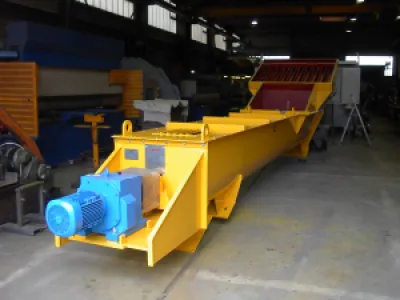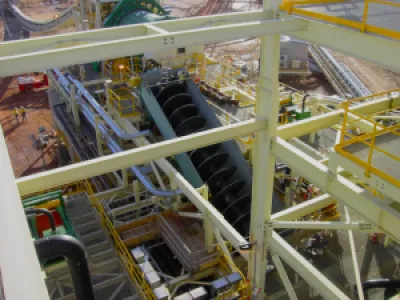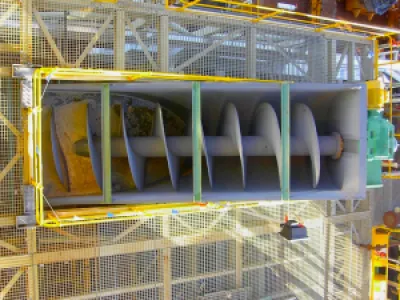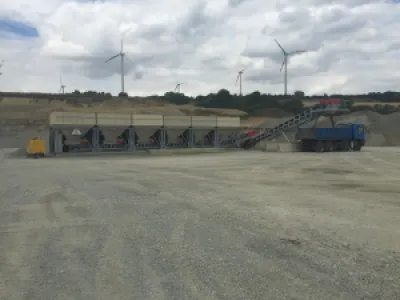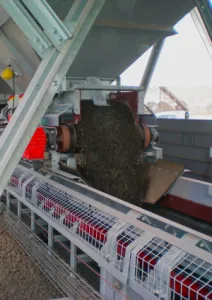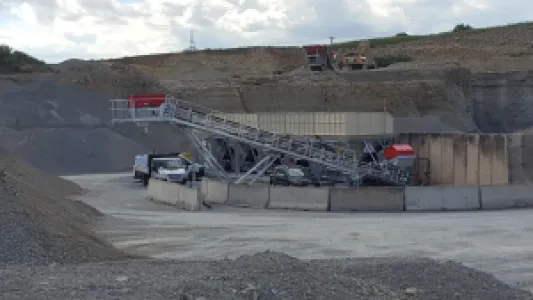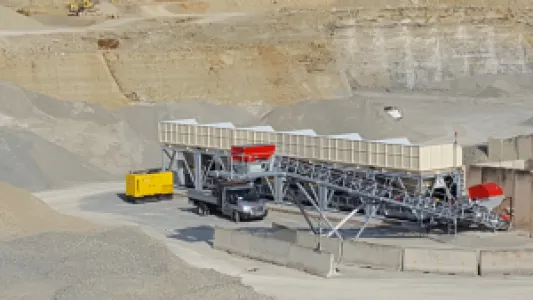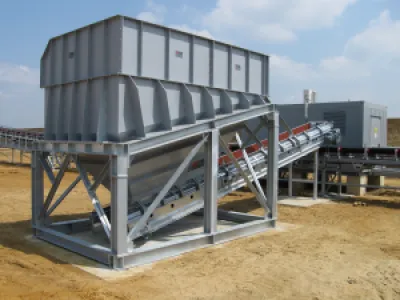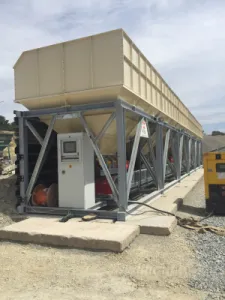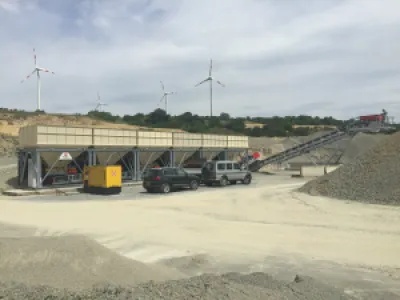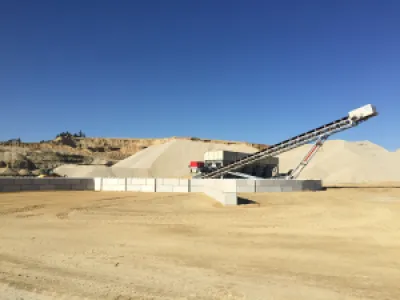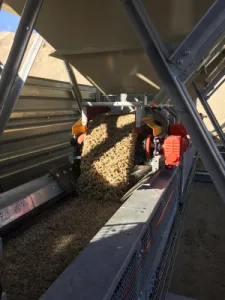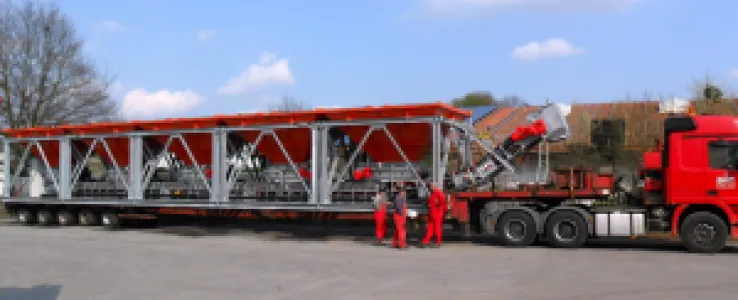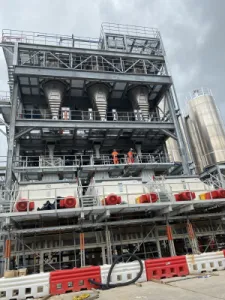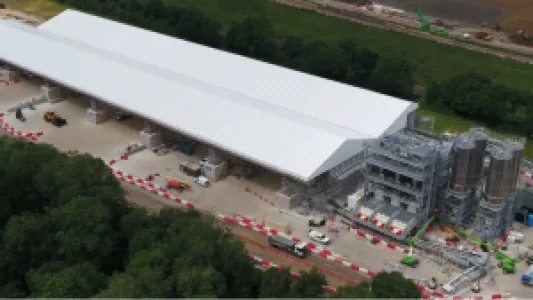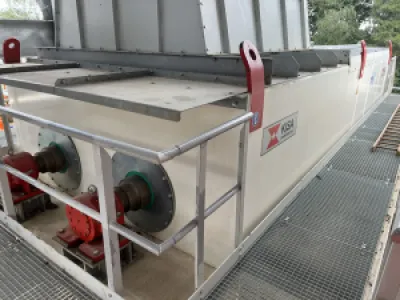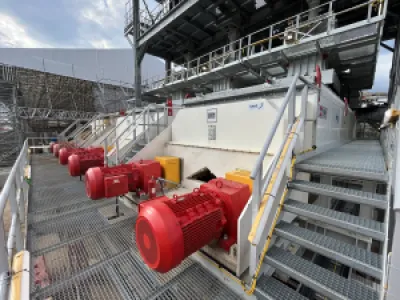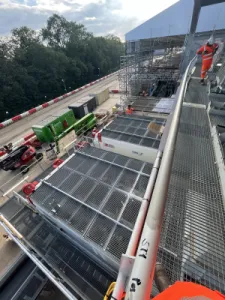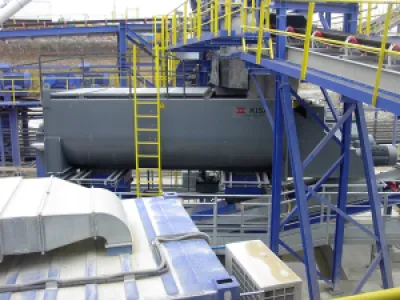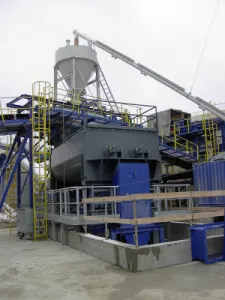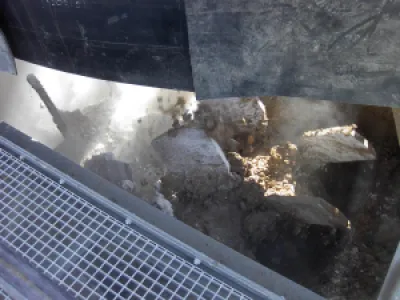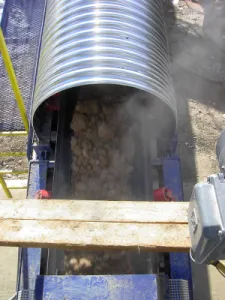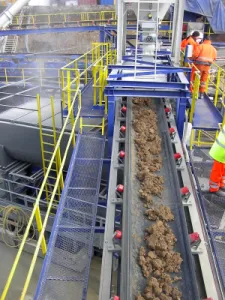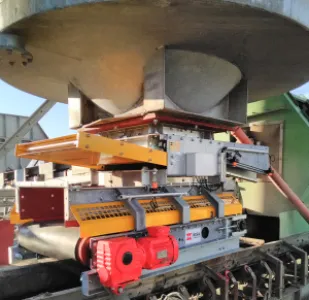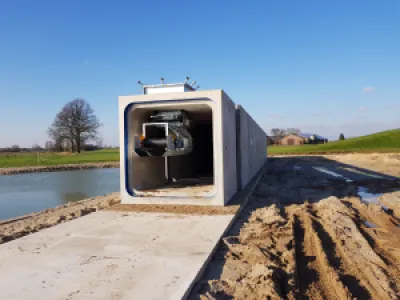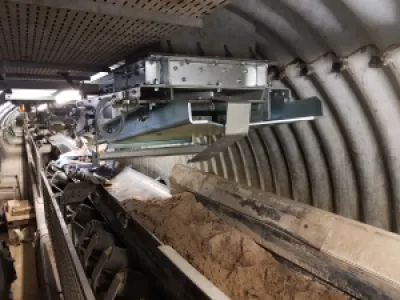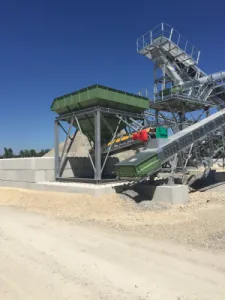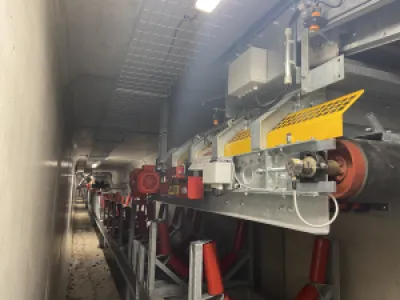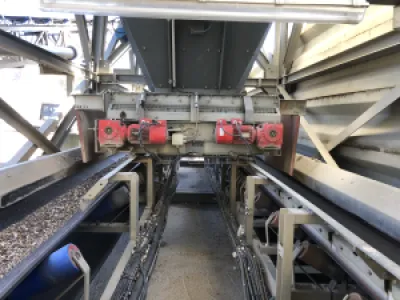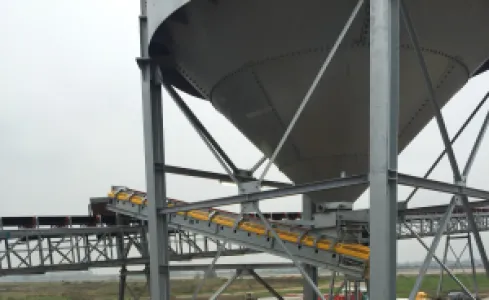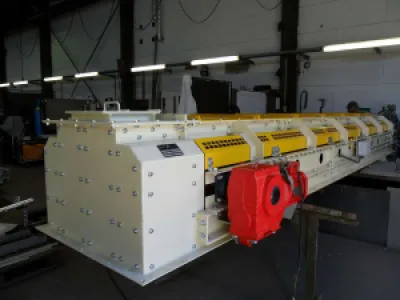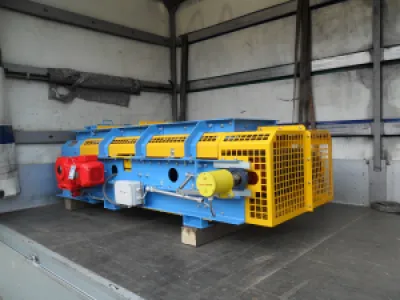Kisa GmbH
Booth number: N01-06
www.kisa.nrw
About us
KISA – Made to lead. Built to perform
For more than 35 years, KISA has been designing and manufacturing robust, high-performance equipment for bulk material processing. Our product range includes machines for washing, dewatering, dosing, dissolving, and blending of various materials. KISA is renowned worldwide for its outstanding quality, durability, and record-breaking capacities.
We serve clients across the sand, gravel, recycling, and mining industries. With custom-made solutions and end-to-end support, KISA is your reliable partner – from planning to commissioning, worldwide.
Address
Südstr. 44
47475 Kamp-Lintfort
Germany
E-mail: info@kisa.nrw
Phone: +49 2842 965930
Internet: www.kisa.nrw
Contact person:
Products & Services
KISA designs and manufactures robust, high-performance equipment for bulk material processing. Our portfolio includes:
Log Washers – for efficient removal of clay and impurities from raw rock (up to 600 t/h).
Dewatering Bucket Wheels – for dewatering sand and gravel with wheel diameters up to 8 m.
Wash and Dewatering Screws – for cleaning and dewatering fine and coarse sand.
Mineral Blending Units – modular systems for precise blending of bulk materials up to 800 t/h.
Mixers & Dissolvers – for homogenizing and separating sticky or clay-rich material.
Discharge Systems – volumetric and gravimetric dosing units, including slide gates and dosing belts.
All KISA machines are designed for long service life, high efficiency, and easy maintenance – backed by decades of expertise in the sand, gravel, recycling, and mining industries.
Logwashers
KISA Logwashers
General
KISA log washers are designed for washing muddy feedstock.
Grain sizes: to 250 mm
Throughput: 40 t/h to 600 t/h
Length of trough: 4 to 10 m
Our Logwashers
Highly efficient washing results for a wide variety of rock types are achieved with a KISA heavy-duty wash.
Clay, loam, and other impurities are grated by rotating intermeshing paddle shafts and directed out of the sword wash via a predefined water flow. Suspended solids such as wood and foliage are also separated from the rock and discharged from the machine.
The KISA Log Washers are characterized by a robust design. Even under rough operating conditions, a long service life can thus be achieved if all maintenance work is carried out properly
Mode of operation:
A Log washer is set up at an angle, with the outlet at the top. The contaminated rock is fed in at the bottom, inclined upwards, conveyed through the machine and cleaned in the meantime. Two counter-rotating paddle shafts, with paddle arranged in a spiral, rub the impurities from the rock and convey it upwards at the same time.
Opposite to the conveying direction, a water flow runs through the machine, which causes a clear separation between the clean rock and the impurities.
Design:
Depending on the requirements, we adapt the machine together with the customer. For example, if the rock is heavily contaminated, we lengthen the trough or increase the trough inclination to extend the washing time.
Common variables are: the trough length; the inclination of the machine; the electrical drive power; and the water feed.
The actual size depends on the throughput capacity.
Dewatering bucket wheels
KISA Dewatering bucket wheels
General
Dewatering bucket wheels are used for dewatering sand and gravel, feeding suction dredgers, and recovering fine sand.
Wheel diameters: up to 8000 mm
Wheel width: up to 2800 mm
Solids output: to 1500 t/h
Grain sizes: up to 200 mm
KISA Products
Our Dewatering bucket wheels
So-called suction dredgers are usually used in the gravel industry. The resulting water-gravel mixture is transported to the processing plant by means of hydraulic conveying. Within the plant, the material is transported via conveyor belts. For this purpose, however, it must be dried in advance, as it would otherwise, due to the high water content, flow off the belt.
Mode of operation:
The water-gravel mixture enters the machine, which is already filled with water, via the inlet chute.
Scooping elements, which are arranged in a circle in the rotating wheel body and have been provided with a sieve opening on the underside, lift up the fallen solids portion by portion. Depending on the mixing ratio between gravel and water, the speed is regulated fully automatically.
During half a revolution, the gravel now loses so much moisture that it “becomes pumpable”. A special device inside the wheel body, intensifies the drying process with the help of negative pressure.
Via chutes, the gravel with a small residual moisture reaches a conveyor belt and can be fed to the following production steps.
Types of construction:
The greater your mixture output, the larger the dewatering scoop wheel must be. Wheel diameters from 2.6 to 8m and wheel widths from 0.6 to 2.8m offer a wide range of possibilities.
In case of high fines content, which should not be lost via the water overflows, it is necessary to work with a trough widening. The endings: S; M; L; of the type number, stand for the length of the feed spirals or the width of the trough.
The wider the trough, the greater the water surface and the more time available for sedimentation of fine components of the material, since the water overflows are located at the edge of the machine.
Feed spirals convey the fines at the bottom towards the wheel body.
Wash- and dewatering screws
KISA Wash- and dewatering screws
General
KISA Wash- and dewatering screws for cleaning and dewatering of sand.
For low solids outputs, the KISA washing and dewatering screw is used as an alternative to the scoop wheels. The solids are transported by a rotating screw inside the machine. Escaping water flows down along the inclined machine bottom.
Flow rate capacities: to 270 t/h
Blade diameters: to 2000 mm
Trough length: to 10500 mm
Trough inclination: 25°
KISA Products
Our Wash- and dewatering screws
In case of particularly heavy contamination of the rock, additional washing tools and a water upflow device are provided.
The solids are mostly fine or coarse sands in the grain ranges from 0 to max. 8 mm. The feed of the sand-water mixture takes place in the lower part of the screw trough, the so-called water box.
For a smooth water overflow, the overflow chamber is separated from the inlet chamber by a partition wall. The overflow chamber is equipped with several water channels. This achieves a low discharge velocity of the water, which reduces the loss of fine sand.
A natural bed of material is formed between the screw flights and the trough bottom, which protects the screw trough against wear. When conveying to the discharge side, the material is compacted by the movement at the screw flights, resulting in good dewatering.
Wear of screw blades
Wear of screw blades is highly dependant from raw material. Wear increases with crushed material or increasing grain size.
A cladding of wear strips, made of HARDOX or optional thick plastic segments has been proved as wear protection at the conveying side of the screw blade.
The wear protection is bolted, as a rule and thus can be changed.
Mineral blending units
KISA Dosing units
General
KISA mineral mixing plants are used for the production of standardised aggregates for road construction, gravel, sand and grit mixtures. In principle, mixtures of bulk materials are possible.
Loading capacity: 800t/h
Capacity per bunker: between 15, 20, 25 and 30m³
Design: modular and semi mobile
KISA Products
Our Mineral blending units
Each feeding hopper has its own supporting construction and so is self supporting. Therefore any sequence or combination, also later supplementation are possible at any time
Our bunkers can be combined to form bunker batteries. Up to 5 hoppers, complete with dosing belts and discharge conveyors, can be transported as a single unit on an articulated lorry, ready for electrical connection.
This guarantees quick assembly on site. The top plates are movable and only need to be opened and bolted in place. They can be mounted either on the left or right.
Also a supporting wall for a ramp at site is mounted. It is possible to link the wall at the right or left side.
When the bottom at site is hard surfaced, levelled and an electric connection cable is available, the plant is ready for operation within a few hours.
The charging can be done directly by the skid-mounted KISA conveyor belt. It is height-adjustable – in several Stepps – and slewable 180°over a centre pin. Stairs with a single-sided gangway and gallery, round the drive, enable a quick access.
At the discharge head of the loading belt, optional KISA mixing wheels or KISA double-shaft mixer can be placed, for absolutely homogeneous mixing.
A continuous flow characteristic of the bulk material is reached by wide, long discharge openings, steep cones and vibrator chutes. At the transfer to the loading belt, a shower is used for moistening. All drives are provided with thermo sensors for full motor protection and with separate repair switches.
By the KISA software MKV2 the plant will be observed and operated very easy, optional with a touch screen – PC (electric protection IP55) or a commercial quality PC. Input and management is possible for blendings, customer list, loading rate, etc. It is also possible, to use card readers, which enable “self-service” loading by the truck driver. Switching over to manual operation enables the conventional operation by push button.
All possibilities can be realized by this – here shown – loading unit. The client optional can do the truck loading by the KISA dosing unit or feed the stock pile discharge belt through an additional hopper.
By a wheel drive the loading belt is moveable. Lots of new possible compositions (recipes) are opening a total new market area.
Mixer & Dissolver
KISA Mixer & Dissolver
General
The KISA double shaft mixer is designed to mix two subtrates. An example is mixing clay-containing soil with a binding agent to improve its conveyability.
The KISA double shaft dissolving unit is designed for the mechanical separation of clay-containing contamination in gravel in order to separate them from each other in the subseqzent screening process.
KISA Products
Our Mixer & Dissolver
By adding binding agents such as: Lime, very watery soil can be transformed into a conveyable substrate.
Two counter-rotating shafts, which are equipped with spirally arranged plates, convey the mixed material through the trough of the machine and mix it during this process. Any necessary binder is fed into the machine together with the substrate.
The mixing result is influenced by the mixer length or by the additives added.
The throughput capacity is defined by the respective size of the twin-shaft mixer. The shaft speed is an almost constant value and is therefore only of minor use for adjusting the flow rate.
An application example for this is the accumulating soil during tunnel drilling, where usually a lot of water is used.
Discharge systems for bulk material
KISA Discharge systems for bulk material
General
The KISA dosing units are either volumetric or gravimetric (calibratable) and consist of a slide valve and a dosing belt.
Combined dosing units
Electric gates, with and without dewatering
Dosing conveyors
Flat slide gates – and emergency shut-off gates
Blending units
Trucker self-service for loading
Special constructions
KISA Products
Combined feeding units
Typ SN / SD
Type SN / SD
Typ SN / D
Type SN / D
Typ SN / S / D
Type SN / S / D
Typ S / D
Type S / D
KISA – combined feeding units are used for difficult-to-convey bulk material. Gate and conveyor are assembled to one unit by a connecting box. Vertical, bolted blades below the gate bottom provide the bulk material down to the feed belt and so prevent an uncontrolled breakaway. The gap between gate casing and connecting box – when opening the gate – is closed by long sealing bars, bolted on the face sides of the bottom plate. So, down to the discharge head of the feeding belt, a closed material flow is realized by KISA feeding units.
The KISA feeding unit always allows a maximum open cross section of the gate. So bridging and the resulting hang-ups will be avoided.
A column of bulk material is developing above the conveyor belt. A controlled dosing and discharge of the bulk material is possible by choosing belt speed and given layer height.
KISA combined feeding units have the smallest possible mounting height and are designed self-supporting up to 2 m center distance of conveyor belt.
All sheet parts are galvanized and bolted.
Optionally you can combine KISA feed belts with all KISA slide gate series. Also triple combinations, as for example, feed belt / drainage gate / emergency gate are possible.
The clearance width of the gate should be at least as big as the feed belt width. So the material flow remains undisturbed and high abrasion can be avoided. A material control flag is signaling the status “EMPTY“.
KISA Products
Electric gates for dewatering and dosing of bulk material
Type S Type SS
Type S or SS with quadratic or rectangular opening
Typ SD
Type SD with continuous quadratic opening
KISA – electrically driven slide gates are constructed in modular design. All frame parts are bolted to each other and each single part can be changed in case of wear and tear. The drive is positioned in the center and protected between the side bar sheets. The gate bottom is declined considerable and so presents the premise for a good drainage of wet bulk material. All sheet parts are hot galvanized. Drive shaft, pinion, rack and slide rails are galvanic plated. Installed limit switches mark the positions “Open” and “Closed”.
KISA – electrically driven slide gates are equipped with engine brakes. In case of volumetric loading, we achieve by this means 100 % reproducibility of the open cross section, dependent of the running time.
In case of closed KISA – electric gates a drainage for wet, standing column of bulk material will be achieved. This is done as well by installed draining screens, as by the adjustable gap, between gate bottom and casing. Both of the water flow will be provided over the declined gate bottom to the gutter below the gate and can be drained further by customary plastic pipes at site.
For less flow rates however, as for example for blending, the KISA type SD is suitable. A quadratic cross section is formed in every state of opening and so there are optimal flow characteristic for the bulk material.
KISA Products
Dosing belts
KISA dosing belts are used for gravimetrical as well as volumetric dosing of bulk material. The design is modular, as for the gates i.e. every single part is bolted and can be changed in case of wear.
Discharge capacities up to 2500 t/h are possible. The newest technology of frequency converters allows absolutely continuous control for any range So, for example the capacity control of the KISA Standard belt D800, covers the range of 0–600t/h.
Type D for standard use
Type DR for reversible operation
Type DS widening material guiding in conveying direction
Type DX for special sizes
Type DG with weighing accuracy +/-1%
Type DGX with weighing accuracy +/-0,25%
Further equipment features:
exchangeable wear protection in the range of high abrasion by product
slip-on gears with thermo sensors and ISO – Class F
change of belt is possible, without dismantling of drum
wide hand holes in the longitudinal frames for easy change of carrier rollers
guiding strips made from natural rubber for extremely wet product
guide bars/boxes, widening in conveying direction
high dosing accuracy, even if pure volumetrical
rigid, heavy design
hot-dip galvanizing
signal „empty“ (optional)
failure sensor (optional for standstill)
belt off-track limit switch (optional)
KISA Products
Flat slide gates and emergency shut-off gates
Typ SNE
Type SNE for small installation height with electric drive
Typ SN
Type SN emergency gate with rack, manually actuated by wrench SW36
Typ SNS
Type SNS needle gate, for shut-off standing column of bulk material
Typ ST
Type ST emergency gate with push plug
KISA Products
Single grain size loading
Einzelkornverladung
Einzelkornverladung
Einzelkornverladung
Einzelkornverladung
The KISA loading terminal EKV-1 enables the self-service loading by the trucker. The big keyboard and an easy to read, reflexion-free display asks for the following input:
quantity to load in tons, for example: 29,3t
with or without trailer (with trailer a second quantity has to be defined)
Start – push button
After a programmable delay, the gate valve opens and automatically starts the dosing conveyor respectively. The loading will be volumetric, depending from opening width of gate valve and the flow rate of belt conveyor and the processor-calculated time, respectively.
A high standard of precision is reached by the high time resolution and the exact, mechanical reproducibility of KISA dosing units.
KISA Products
Blended grain size loading
Software MEDOS
Software MEDOS
Our software MEDOS, especially developed for blended grain size loading, allows to create and manage extreme varying blends. By calling prior deposited recipes (compositions) and the loading quantity, can be started at once.
A unique menu guiding and the clearly visualized MECOS are the warranty for an easy to handle operation.
MEDOS can operate volumetric, as well as gravimetric.
The handling is possible optionally by a commercial quality PC or a touch screen PC with protection IP55 for outside operation.
Self-service loading for truckers, here are also possible with corresponding card readers, mostly by transponder cards.
KISA Products
Special constructions
Special tasks require special solutions.
The employees of the design department determine the optimum design of the respective machine in close consultation with the customer.
-thumb.webp)
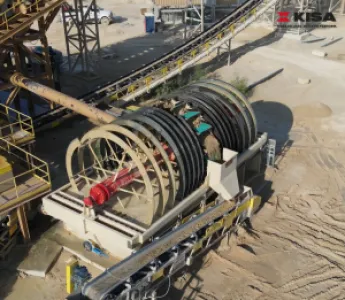
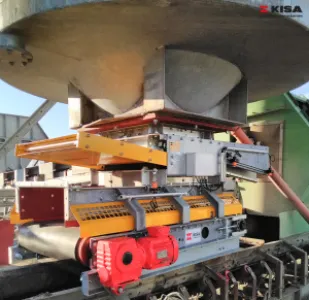
-thumb.webp)
-thumb.webp)
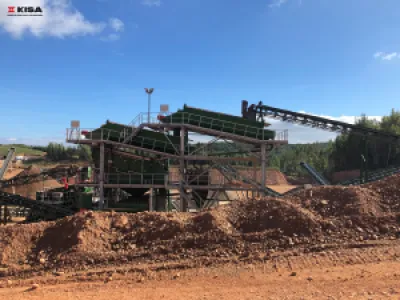
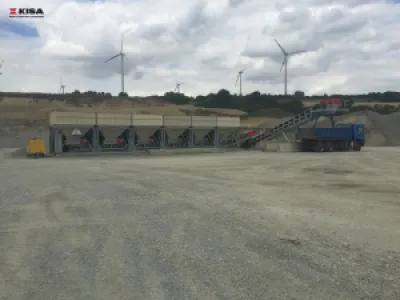
-thumb.webp)
